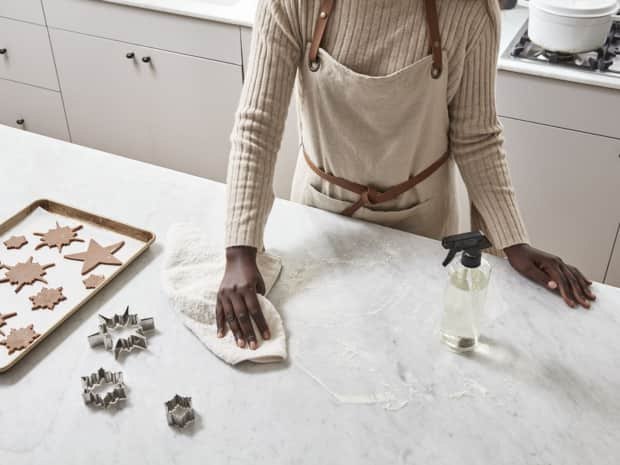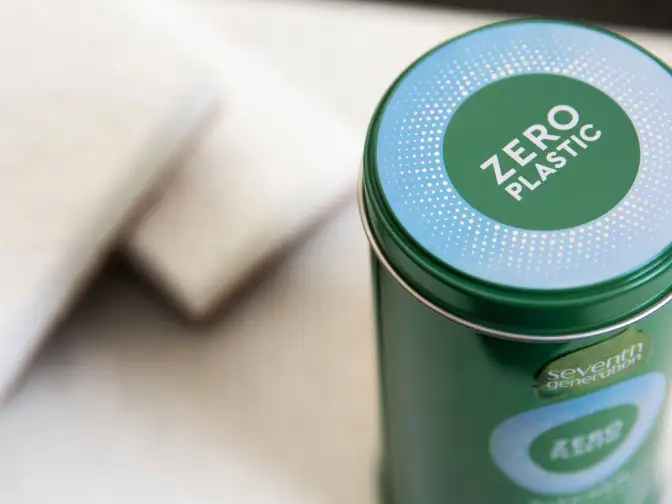
The Germiest Household Items Most People Forget to Clean
The most overlooked things in your home you should be cleaning right now.
Read More


Last Updated: August 30, 2022
Are you tired of flour bugs calling first dibs on the dry food in your pantry? Banish these flour-eating fiends with these natural tips and tricks on flour bug prevention.
It’s a real drag when you’ve got everything ready for a marathon weekend of baking — only to find wheat bugs living their best lives in your pantry staples. But what are these strange little creatures, where do they come from, and most importantly –– how do you get rid of them?
You’ve got questions, we’ve got answers. Put the kibosh on these flour-loving interlopers for good with our natural guide to flour bug prevention.
Flour bugs — also called pantry weevils, rice bugs, wheat bugs, or flour worms — are actually tiny beetles that feed on the dry food in your pantry. Flour, cereal, rice, cake mixes, and pasta are all favorites of these miniscule foodies.
But unlike other pantry pests that simply eat your dry goods and leave, these little fellas are masters of indulgence — flour bugs like to mate while they eat, and then lay eggs in your flour. The eggs then hatch, and those baby weevils carry on the family business of eating and fornicating in your food. Delightful, right?
What do flour bugs look like, you ask? Take a look below …
There are a couple ways these guys infiltrate your home. Female weevils lay eggs in the wheat kernel in the field, and occasionally those eggs survive the milling process and end up in the bag of flour you bought from the store. The eggs hatch, and the larvae begin their pre-coital feast.
The second way evil weevils weasel their way in is via cracks, gaps, and holes in the walls and windows of your home.
Weevil eggs are so tiny that it’s impossible to tell if they’re in your flour. But once they hatch, identification becomes much easier. Here are a few ways to tell if these pesky pests are free-loading in your cupboards.
Baby weevils are light brown, worm-like creatures. As they mature, flour weevils turn a metallic gray color with an oblong shape. They’ll skitter through your flour with wild abandon, making them easy to spot.
Have you ever noticed a cobweb-like substance coating your flour? Congratulations, you’ve got wheat bugs. The larvae leave a filmy material in their wake that looks a lot like a spider’s web. Yum.
Right off the bat, you might not see any live weevils — oftentimes they’re living out their carnal fantasies burrowed deep within your flour. What you will see are trails of the dead. Weevils live one to three years — and once they die, carcasses and molted skin will litter your dry pantry goods.
Sometimes the presence of flour bugs leaves an odor or funny taste to your dry food due to, you know, things like dead flour worms and feces. If something seems off when you open your bag of flour, shake it around to see if there are any critters — or parts of them — hiding in the depths.

Yes and no. A couple weevils in your flour isn’t a big deal — the flour is still totally usable — but it’s an indicator that you’re on the brink of a weevil outbreak.
Once the flour bugs start multiplying, you’re at risk for spoiled goods and possible food borne illness due to the sheer number of dead weevils and weevil poop present in the food.
Your best bet is to toss the product, clean out the cupboards, invest in proper storage containers for your flour and other dry food, and begin anew.
Eating weevil-infested flour certainly isn’t anyone’s idea of a good time, but rest assured that it won’t kill you. They’re harmless!
If you notice weevils getting down-and-dirty in your flour after you’ve already used it, try not to panic. Baking kills eggs and hatched weevils before they ever make it to your mouth, so the chances you’ve been eating live flour bugs are pretty slim.
Whether you’ve already got ‘em or you’re trying to avoid ‘em in the first place, we’ve got six hot tips for flour bug prevention.
1. Deep clean
Remove everything from your pantry, and toss any open containers and items that have been infested. Vacuum the shelves, then use an all-purpose pest remedy spray, hot soapy water, or a natural cleaning spray to give it all a good wipe-down before replacing your salvaged dry food.
2. Use proper containers
Storing your flour, sugar, cereals, and other grains in proper storage containers helps keep the flour bugs at bay. Choose airtight containers and jars for the best results.
3. Freeze
If your flour hasn’t been taken over by fully-grown bugs, stick it in the freezer for four days. Freezing kills off eggs and larvae, preventing them from turning into a full-blown army. Freezing any dry foods after bringing them home from the market is a good preventative measure to get in the habit of.
4. Use an insecticide.
Non-toxic insecticides are available specifically for pantry bugs. They do emit fumes, so it’s important to keep children and pets away until the odor dissipates.
5. Natural deterrents.
Garlic cloves and bay leaves are natural alternatives to keep the weevils away. Place cloves of garlic and dried bay leaves on your freshly-cleaned shelves to deter these nasty bugs.
6. Call the professionals.
If your flour bug infestation is really bad or you’re not entirely sure it’s weevils that you’re dealing with, call a pest control specialist to come check it out.

Choosing the right storage containers for your flour and dry goods is an essential step in weevil prevention. Cardboard boxes and plastic bags are like child’s play to these little guys — they’ll eat their way right through them. Invest in quality containers to keep your pantry bug-free. And don't forget to try out these great tips for transforming your pantry into a plastic-free paradise while you're at it.

The most overlooked things in your home you should be cleaning right now.

When ants come marching in ... learn how to steer ants out of your home with natural repellents—and keep them out.

Protect your family and home with our rundown of the best eco-friendly and natural bug sprays & mosquito repellents.

How to go plastic-free if you're just getting started — and how to level up if you're ready to make a commitment.

At Grove, we want to be part of the solution, not the problem. We believe using plastic isn’t sustainable — period. Now it's time for you to take action too.
Over the next five years, we're removing plastic from every product we make and sell, like Seventh Generation natural household products. We’re committed to rethinking our products, transitioning our packaging, and leading our industry with full transparency.